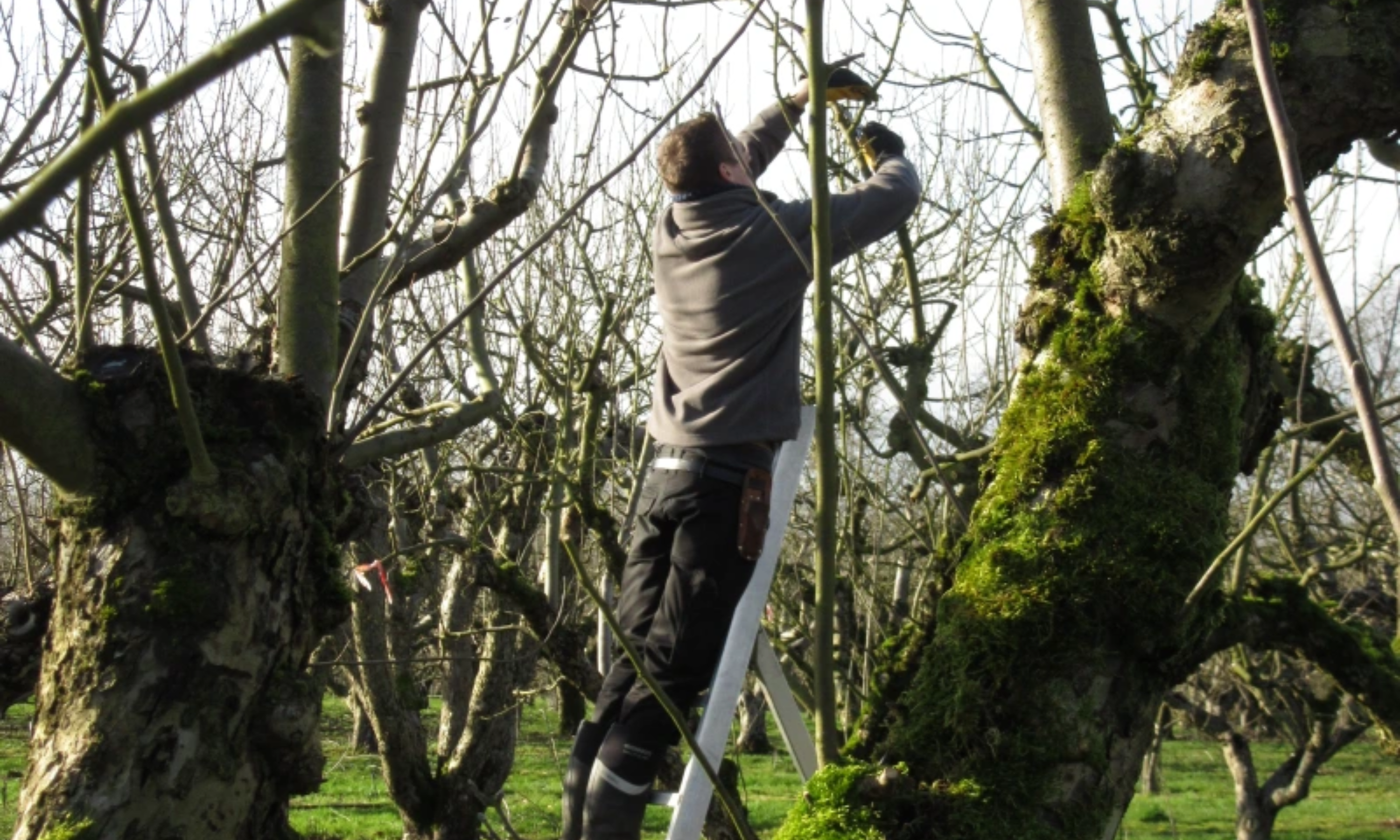Why Prune in Winter?
Pruning is essential to the health and productivity of your fruit trees. Winter pruning not only helps remove dead or diseased wood, but it also rejuvenates old trees, encourages new growth, and maximizes sunlight penetration. This creates a balanced tree structure and improves air circulation, essential for preventing disease. Here are some key reasons for winter pruning:
- Maximize Harvest: Removing old or diseased wood enhances the tree’s ability to produce healthy fruit.
- Prevent Disease Spread: Dead wood is heavier and susceptible to disease, which can easily spread.
- Encourage New Growth: Pruning encourages fresh, productive growth that will bear fruit in the future.
- Increase Sunlight: Pruning helps open up the tree canopy, allowing sunlight to reach all branches, ensuring proper fruit ripening.
Types of Pruning
- Formative Pruning: This is crucial for shaping young trees, ensuring their branches are well-spaced and allowing for light and air to circulate.
- Rejuvenation Pruning: Older trees benefit from removing overgrown or unproductive branches, allowing for new growth and a revived fruiting system.
- Renovation Pruning: If a tree has been neglected, this more intense method gradually restores its structure and productivity over a few years.
- Summer vs. Winter Pruning: While winter pruning encourages vegetative growth, summer pruning helps check this growth and stimulates fruit production.
Practical Considerations
Before starting, ensure you have the right tools, such as sharp secateurs and pruning saws. Clean tools are essential, especially when dealing with diseased wood, as they prevent the spread of infections.
The History of Pruning
Pruning has ancient roots, tracing back to fruit forests in Kazakhstan and early agricultural practices in Persia and Mesopotamia. Historical records even reference apple cultivation in ancient Greece. Over time, pruning evolved, and today, we follow best practices to maintain the health and productivity of fruit trees.
How to Prune
- Differentiate Buds: Learn to identify growth buds (for leaves) and fruit buds. Growth buds are pointy, while fruit buds are rounder and found on older wood.
- Prune for Light and Space: Open up the tree’s structure to let in sunlight and prevent overcrowding, which can lead to smaller fruit or disease.
- Timing: Complete winter pruning before bud burst, typically by the end of March. Remember, always prune carefully, taking no more than one-third of the tree in a year to avoid shocking the tree.
Final Thoughts
Take your time with pruning—it’s like meditation. Walk around your tree, observe its structure, and plan your cuts with care. A well-pruned tree not only looks beautiful but can continue to produce fruit for many years. And remember, always have a cup of tea or glass of wine nearby—pruning should be a thoughtful, relaxed process! 🌳✨

Uyducu Malatya uydu servisi Uyducu Malatya, işlerini çok titiz yapıyor, oldukça memnun kaldım. https://socialhustle.co.uk/read-blog/10142
блэкспрут darknet – как зайти на blacksprut, blacksprut com зеркало
MetaMask Extension secures your Ethereum and allows seamless interaction with DApps. Install MetaMask to easily manage your crypto and explore the decentralized web.
Download and install MetaMask extension with this beginner guide. Securely set up MetaMask for Ethereum and Web3 applications.
MetaMask stands out as one of the most popular wallet solutions, especially for interacting with Ethereum-based applications. This guide covers everything you need to know about downloading and installing the MetaMask Extension, empowering you to manage your digital assets with ease.
From start to finish, everything was perfect. Thank you for being so awesome and helpful!
Super happy with the service! You guys rock! Thanks for making everything so easy.
You made my day! Thank you for the amazing service – couldn’t be happier!
Big thanks to the team! Friendly, efficient, and just awesome all around. 10/10 would recommend!
Amazing experience! Thank you so much for going above and beyond. Will definitely recommend it to my friends!
Amazing experience! Thank you so much for going above and beyond. Will definitely recommend it to my friends!
Absolutely loved it here! Thanks for the great memories and fantastic service. I’ll be back for sure!
Как официально купить аттестат 11 класса с упрощенным обучением в Москве
выведение из запоя на дому спб выведение из запоя на дому спб .
Thanks for the tips!
купить диплом в ревде arusak-diploms.ru .
Appreciate your effort!
Appreciate your effort!
Thanks for enlightening us!
Thanks for posting!
Thanks for the insights!
Fantastic information, thanks!
Thanks for your time!
Thanks for your time!
Appreciate the share!
Thank you so much for your help! I truly appreciate your support and guidance. https://metamask-extension-1059.blogspot.com/2024/11/how-to-download-and-set-up-metamask.html
Grateful, but let’s not make a big deal out of it.
Much obliged. Don’t expect a parade.
Noted. Thanks.
Consider this my ‘thanks.’ Use it wisely.
Consider this my ‘thanks.’ Use it wisely.
Thanks, I guess. Appreciate it.
Much obliged. Don’t expect a parade.
Thanks, I guess. Appreciate it.
Couldn’t have done it without you, cheers! If you need further info, here’s https://docs.extension.support/.
Much appreciated, this was exactly what I needed! More at https://download.extension.support/
Thanks. https://sites.google.com/view/metamask-extension-62165/metamask-extension-for-chrome-firefox-and-brave-a-comprehensive-guide
Thanks for stopping by and reading! https://docs.webstore.it.com/
Thank you for taking the time to read! https://webstore.builders
промокод продамус https://prodamus-promokod1.ru .
prodamus промокод http://www.prodamus-promokod21.ru .
сколько стоит купить аттестат за 9 класс сколько стоит купить аттестат за 9 класс .
промокод на подключение продамуса prodamus-promokod21.ru .
Thanks. https://docs.webstore.guru/
Thanks. https://casibom.agency/
купить диплом в кунгуре 1oriks-diplom199.ru .
Thanks. https://casiboms.it.com/
Thanks. https://extensions.work/
промокод robokassa https://promokod-robokassa.ru .
Thanks. https://casibom.works/
MetaMask Extension provides secure wallet integration, dApp connectivity, and seamless access to DeFi platforms. Start exploring Web3 today! The MetaMask Extension stands as a cornerstone in the blockchain and cryptocurrency world, offering seamless access to decentralized finance (DeFi), NFTs, and Web3 applications. https://webstore.work/